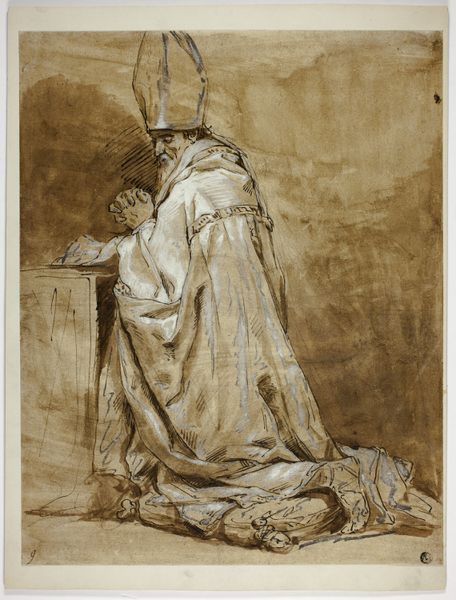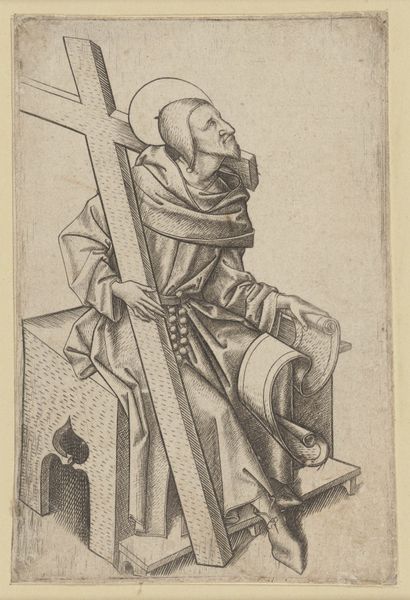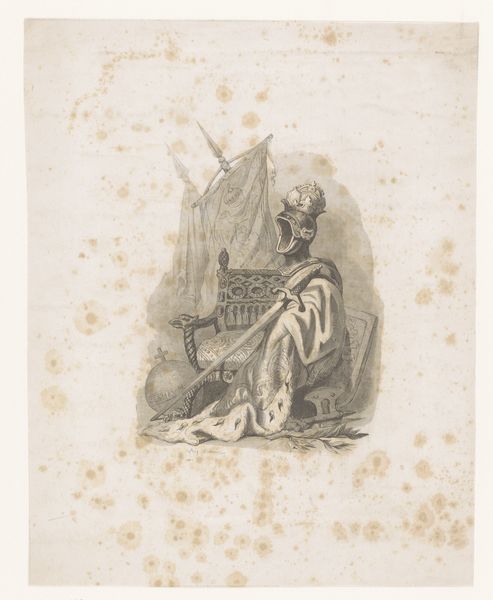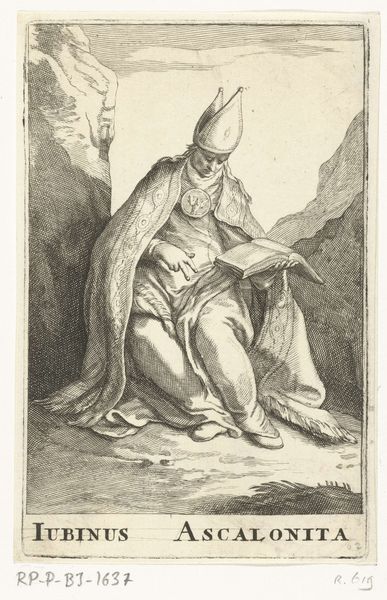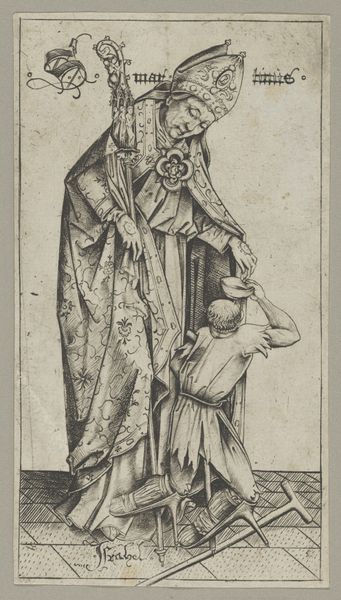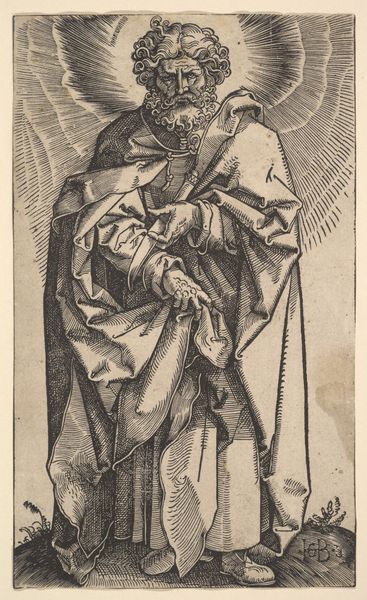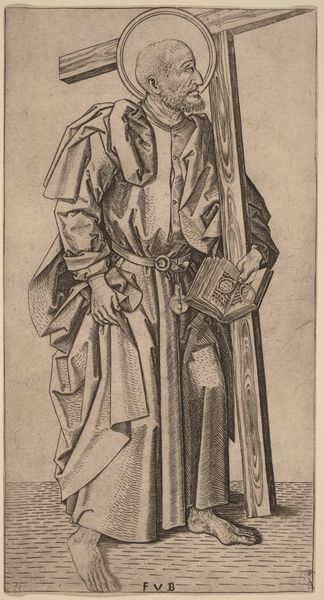
drawing, print, paper, ink, pen
#
portrait
#
drawing
#
medieval
#
baroque
# print
#
paper
#
ink
#
pen
#
history-painting
Dimensions: 242 × 161 mm
Copyright: Public Domain
Curator: Abraham Bloemaert’s pen and ink drawing, "Saint Willibrord," from circa 1625 to 1630, presents a seated figure exuding quiet authority. Editor: I see him and I immediately feel this serene stillness, you know? Like he’s a lighthouse in a storm, radiating peace right through the paper. Curator: Notice how Bloemaert utilizes subtle tonal variations to construct form. The cross-hatching technique suggests depth and texture, particularly in the saint’s voluminous cloak, emphasizing his commanding presence within the composition. Editor: Absolutely, but it's not just formal, is it? Look at the way he holds the staff—not as a weapon, but more like a gentle guide. And those eyes… There’s a story in those downcast eyes. Melancholy, maybe, or profound wisdom? It is up to the viewer. Curator: Interesting, yes, one can interpret his downcast gaze as reflective. But, formally, the use of light is crucial here, radiating from behind the figure. It’s a Baroque strategy that infuses a sense of divine grace, effectively highlighting the subject’s spiritual importance. Editor: Divine, sure, but doesn’t it also add a touch of mystery? Like we’re only getting a glimpse of who this guy really is. And that makes you want to fill in the blanks. Curator: Certainly, the drawing offers a restricted view, prompting viewer participation. Editor: See, art’s not just about what’s there, but what isn't, right? That's the delicious part of all of this, the creative opening between the art and us. Curator: Indeed, a fascinating example of the synthesis of formal structure and implicit narrative. Editor: For me, this drawing's an invitation—a call to quiet contemplation. Come meet this drawing.
Comments
No comments
Be the first to comment and join the conversation on the ultimate creative platform.
